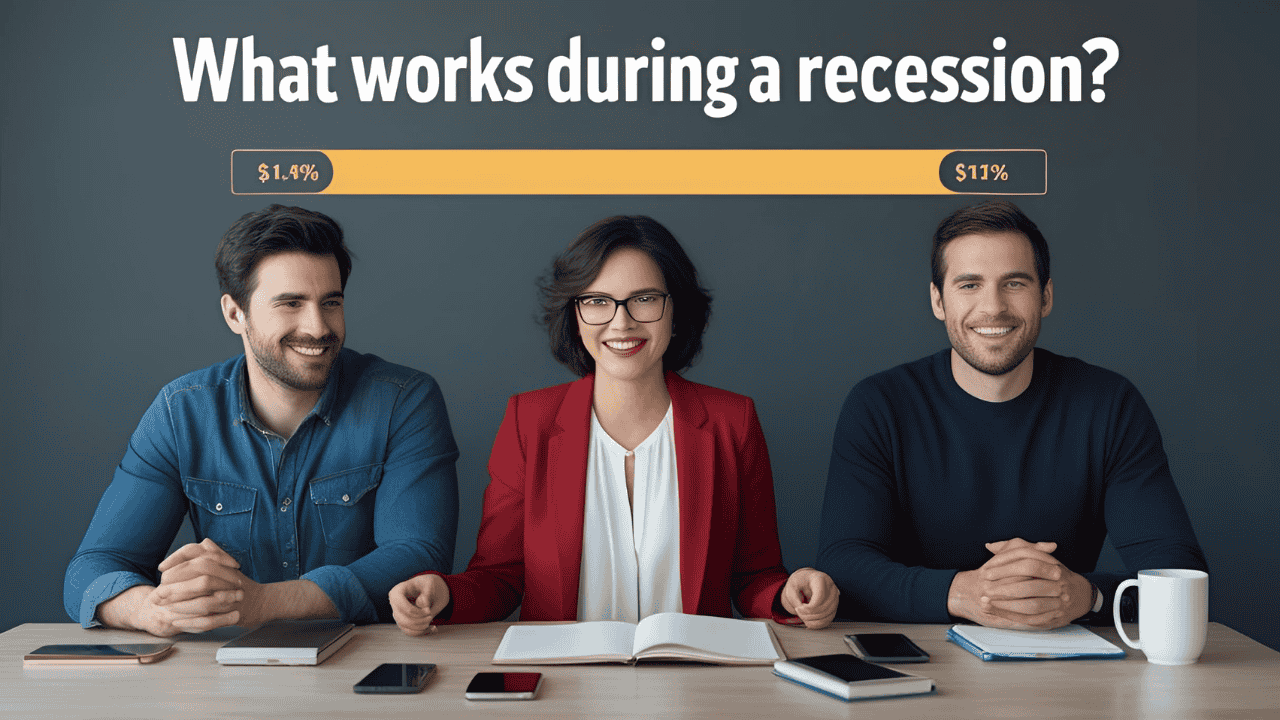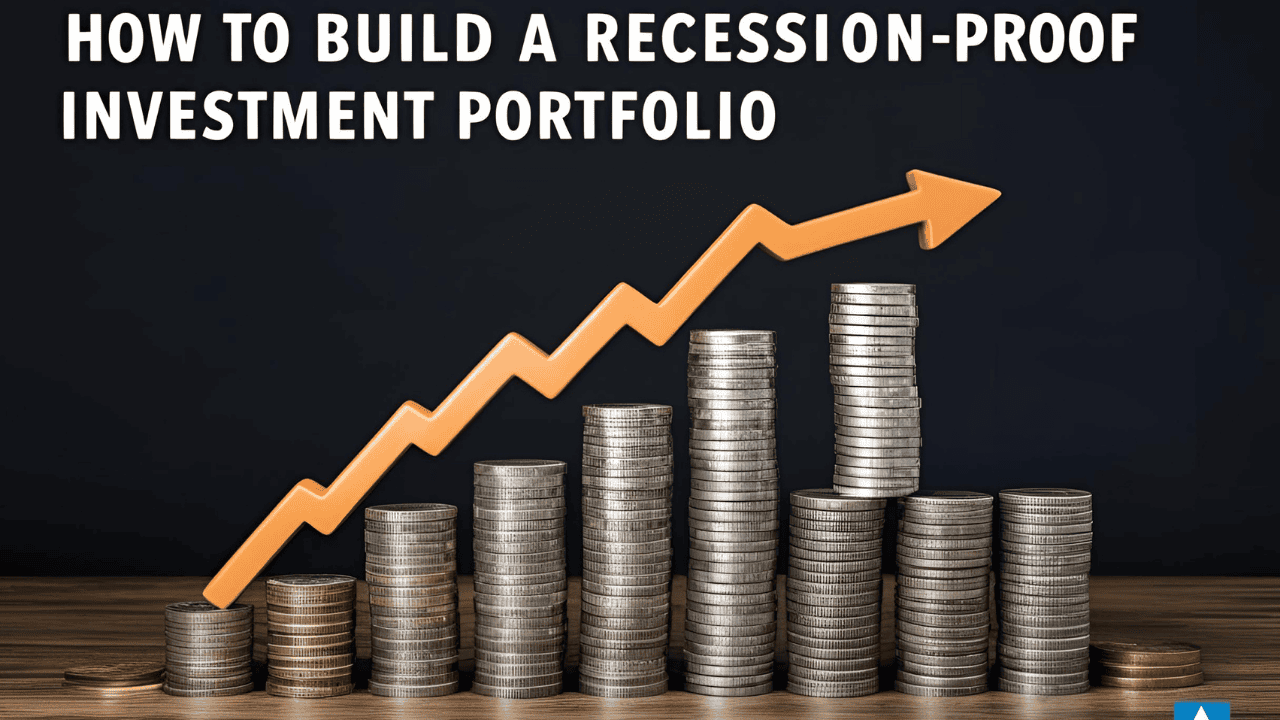Whenever the economy slows down or recession comes, people first worry about their money. The stock market falls, people lose their jobs, and financial stress increases. But if you think a little smartly and make your investment portfolio recession-proof, you will not only avoid losses but can also earn money during that time.
In this blog article, we will talk about how to make such a portfolio which remains stable even during the recession. We will explain in simple and easy language so that anyone can understand it. Let’s start.
If you are a first-time investor, then you should read our article Common Myths That Misguide First-Time Investors before you invest.
What is a Recession-Proof Portfolio?
In simple words, a recession-proof portfolio is one that contains assets that do not lose value or suffer minimal loss during an economic slowdown. It also contains some investments that grow even during a recession.
This does not mean that you should leave the market, but you should balance your portfolio by choosing the right assets.
Step-by-Step Guide: How to Create a Recession-Proof Portfolio
1. Diversification is the Key
Investing money in a single sector or asset class increases risk. Your portfolio should be diversified. This means:
- Stocks (from different sectors)
- Bonds
- Real Estate
- Gold
- Mutual Funds / ETFs
Diversification will keep your overall portfolio safe if any one asset falls.
2. Invest in Defensive Stocks
During the recession, there are some sectors in which investors face less impact:
- Healthcare (people fall sick no matter what the economy is like)
- Utilities (everyone needs electricity and water)
- Consumer Staples (toothpaste, soap, lentils and rice)
The shares of these companies remain relatively stable.
3. Give Importance To Dividend Stocks
Companies that pay dividends are usually financially strong. Even when stock prices fall during a recession, dividends provide a steady income.
- Johnson & Johnson
- Coca-Cola
- Procter & Gamble
- Such stocks bring stability to your portfolio.
4. Add Bonds to Your Portfolio
- When stocks fall, bonds are relatively safe. Especially:
- Government Bonds
- Corporate Bonds (of high-rated companies)
- Bonds create a predictable income source.
5. Maintain an Emergency Fund
Before investing, it is important that you have an emergency fund of at least 6 months. Job loss can also occur during recession. Emergency fund saves you from having to sell stocks.
6. Invest a Little In Gold
Gold is considered a historically safe asset. When the market crashes, people invest in gold. This balances your overall portfolio risk.
You can also invest through Gold ETFs or Digital Gold.
7. Real Estate Investment Trusts (REITs)
REITs are a type of mutual fund that is linked to property. Real estate is often recession-proof, especially residential and healthcare-related properties.
8. Invest in Inflation-Protected Securities
Inflation can happen even during recessions. Assets like TIPS (Treasury Inflation-Protected Securities) protect against inflation and keep your returns at real value.
9. Focus on Low-Cost Index Funds
Index funds like S&P 500 ETFs offer diversification at a low cost. Actively managed funds can underperform during recessions, but index funds perform well in the long-term.
10. Follow Dollar Cost Averaging
This means investing a fixed amount every month, whether the market is up or down. This reduces the average price and reduces risk. SIPs are a best example of this concept.
How to Do Asset Allocation?
Asset allocation is decided according to your age, risk appetite, and financial goals. But if you want to be recession-proof, then this can be a sample allocation:
- 40% Defensive Stocks
- 20% Bonds
- 15% Gold
- 15% REITs / Real Estate
- 10% Cash / Emergency Fund
In this allocation, you will get growth as well as safety.
Mistakes to avoid during the recession
1. Panic Selling
People sell stocks in panic as soon as the market falls. This is the biggest mistake. A market dip is an opportunity for long-term investors.
2. Investing in High-Risk Stocks
Investing money in speculative or penny stocks during a recession is risky. Avoid them.
3. No Emergency Fund
If you do not have savings, you will have to sell your stocks at the lowest point of the market. This increases losses further.
Mindset: Consider recession as an opportunity
Recession does not only mean loss. It can also be an opportunity to buy cheap stocks. Warren Buffett also says:
“Be fearful when others are greedy, and be greedy when others are fearful.”
You can boost your future returns by making the right investments in a recession.
Real-Life Example: What Works During a Recession?
During the 2008 financial crisis, people who invested in healthcare and consumer staples stocks had minimal losses. At that time, people managed their losses by investing in dividend stocks and gold.
Another example: During COVID-19, people who had an emergency fund did not sell their investments in panic and later took full advantage of the market recovery.

FAQs
Q1: Should one invest in a recession?
Yes, if you have an emergency fund and a long-term view, investing can be even more beneficial during a recession.
Q2: Should SIPs be continued in a recession?
Absolutely. During a recession, you can buy more units than the same amount, which increases long-term returns.
Q3: Gold or stocks, which is better during a recession?
There should be a mix of both. Gold provides stability, stocks provide long-term growth.
Q4: Is real estate safe in a recession?
Commercial real estate can be risky, but residential and healthcare-related properties are relatively safe.
Final Words: If you become smart, you will remain safe
Recession is a reality which comes every 8-10 years. But if you have planned your investment portfolio properly, you will not panic.
- Diversify
- Invest in defensive sectors
- Keep emergency fund ready
- Keep SIPs going
- Keep a mix of gold and bonds
Your portfolio will not only survive but will also grow.
Just remember, the market never stops, and a smart investor earns something in every cycle. So, befriend the recession, and set your strategy for the long-term. This is the secret of smart investing.
